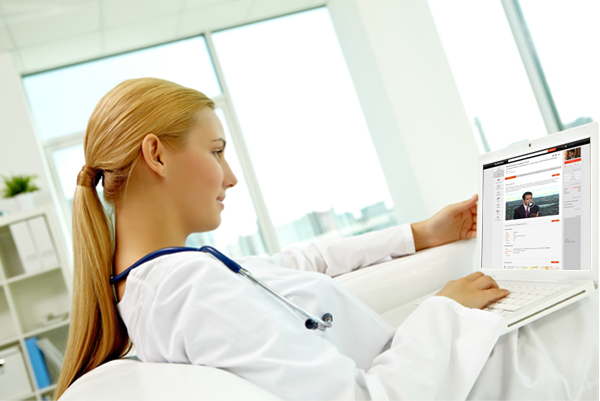|
To-date, Dr Hussain has accrued a substantial personal video content library, which addresses frequently asked questions from his patients who, "don't always have to attend a hospital for reliable information to help them manage their conditions". According to Dr. Hussain, using HealthPad, "can reduce valuable doctor face-time with patients while improving doctor-patient relationships and patient compliance by helping them understand their condition and treatment better".
Video healthcare libraries
Video healthcare libraries, similar to the one Dr Hussain has created, play a significant role in the US to communicate premium, reliable and up-to-date health information to patients and their carers. An important difference with pamphlets and WebMD is that people feel an allegiance to personalised video content in a way that they do not for pamphlets and the written word.
Psycho-social benefits of video healthcare libraries
US evidence suggests that patients feel a greater allegiance to health professionals who provide them with sought after information in a format they like and understand and deliver it personally to their smartphones.
Dr Whitfield Growdon, a cancer specialist who teaches at the Harvard University Medical School and has a gynaecologic medical and surgical practice at the Massachusetts General Hospital also participated in HealthPad's beta test and, like Dr Hussain, accrued a significant video comntent library, which he now uses with his patients. "Videos", says Dr Growdon, "personalise medicine and have positive psycho-social effects. Patients feel that they know me before we have even met and are less inclined to be swayed by discordant and often incorrect medical information they encounter on the internet that can create misperceptions and fear".
Video healthcare libraries connect doctors directly with patients and inform about medical conditions and treatment options. They are cheap to create, cost little to operate and develop, they can be quickly and easily updated and accessed 24-7, 365 days a year from anywhere at any time.
Significant opportunity for UK health providers
Seventy per cent of patients who search online for health information become confused and frustrated.
HealthPad, the new platform which Drs Hussain and Growdon contributed, aggregates premium reliable health information in a format demanded by patients and represents a significant opportunity for health providers to transfer medical knowledge out of hospitals and into the communities.
|


Comments